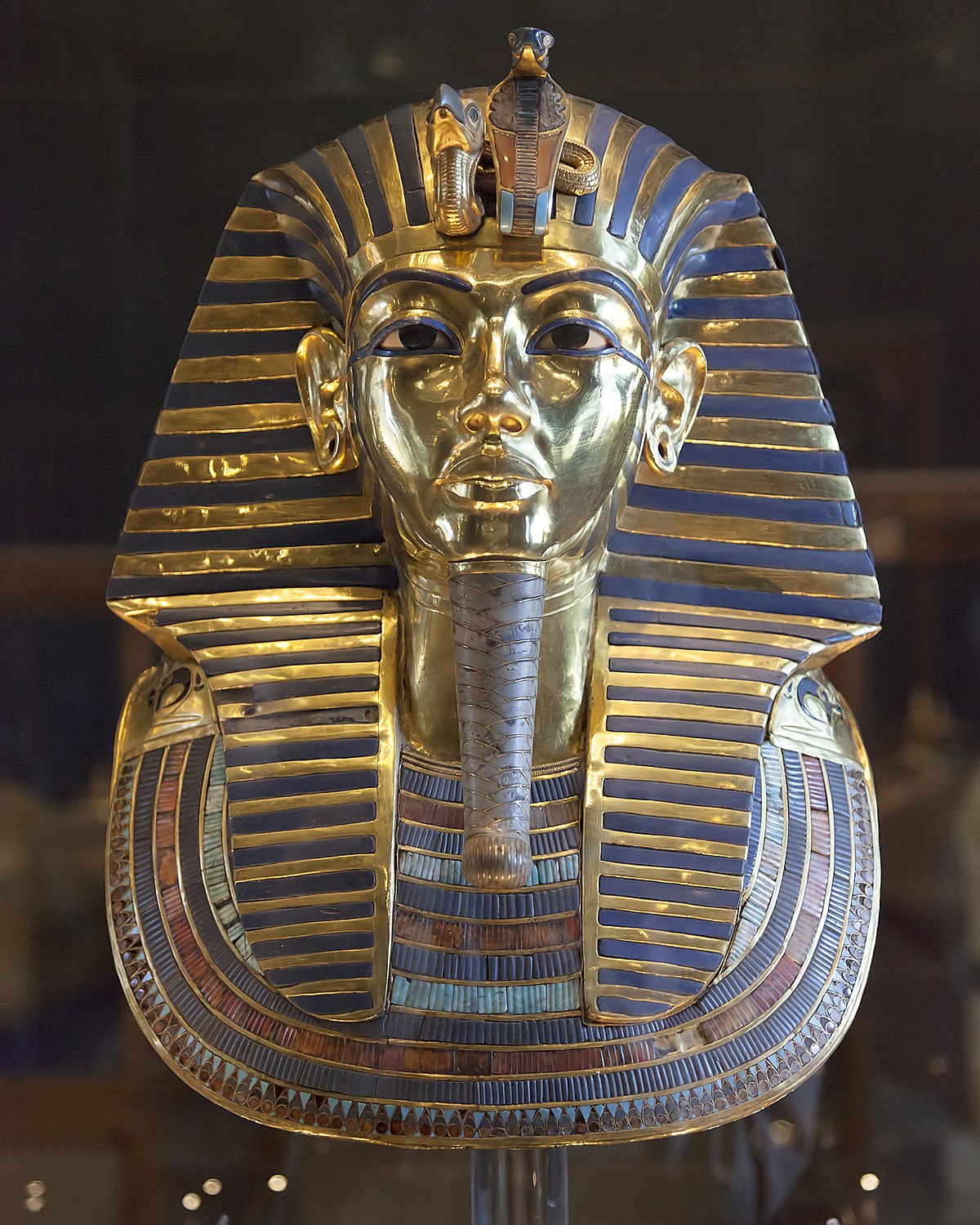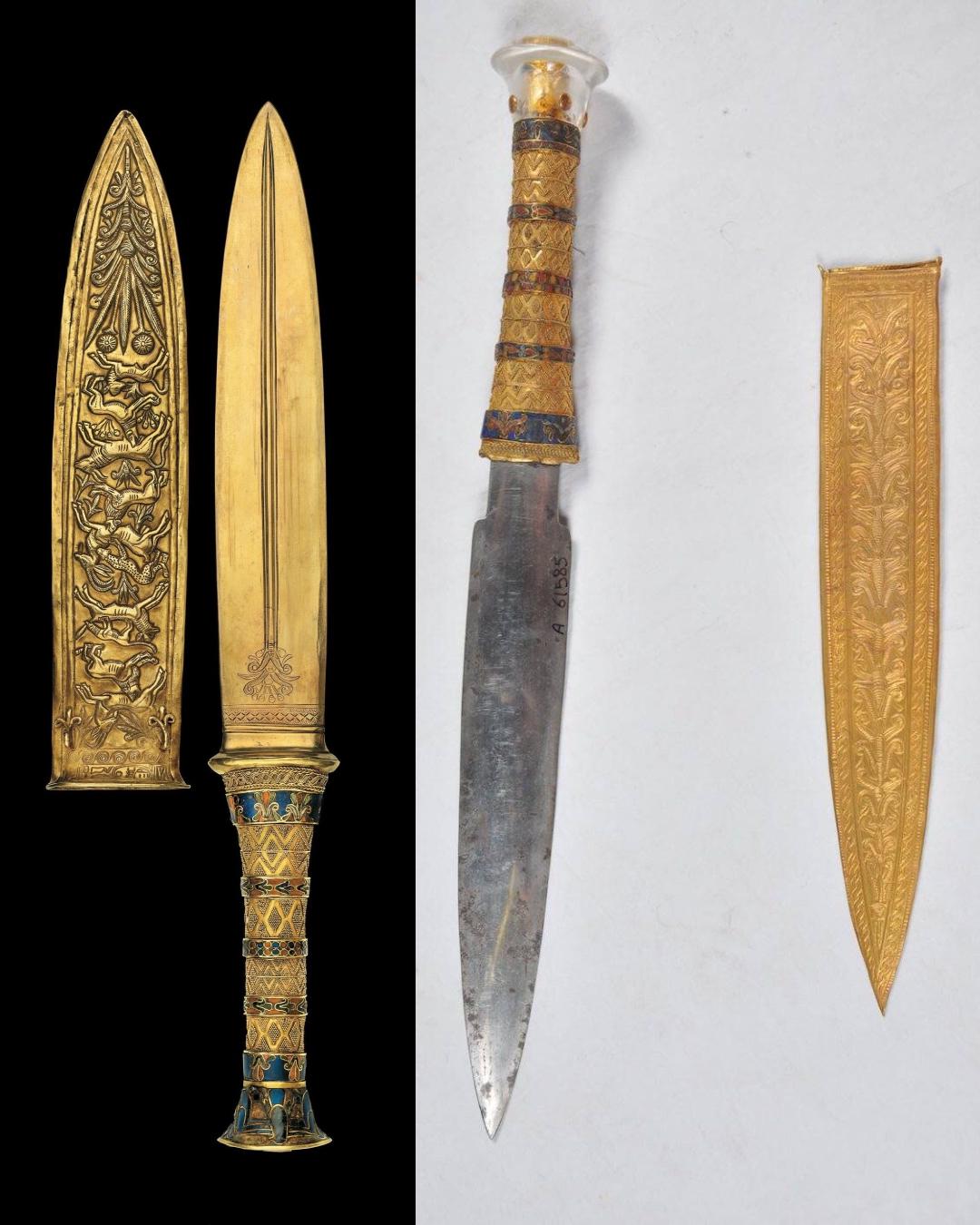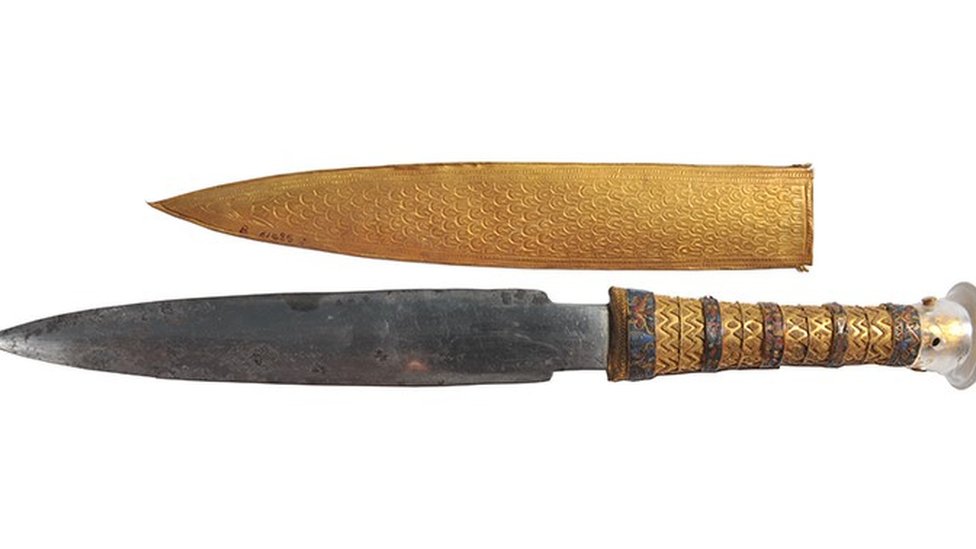In the dimly lit chamber of Tutankhamun’s tomb, among the glittering treasures that had lain undisturbed for over 3,000 years, archaeologist Howard Carter discovered something truly extraordinary in 1925. Nestled against the thigh of the boy king’s mummified body was an ornate dagger, its golden hilt inlaid with crystal and precious stones. While its craftsmanship alone would have made it a remarkable artifact, modern scientific analysis revealed something far more astonishing: the blade was not of this Earth, but forged from iron that had fallen from the heavens.
When Carter first documented the dagger, he noted its exceptional preservation and the unusual quality of its iron blade. In an era when most ancient Egyptian implements were crafted from bronze or copper, the presence of such a fine iron weapon was puzzling. The blade showed no signs of corrosion despite its age—a mystery that would remain unsolved for nearly a century.
The dagger’s uniqueness extended beyond its material. Its golden hilt featured an intricate design with a crystal pommel, and it was housed in a gold sheath adorned with a pattern of feathers and lilies, terminating in a jackal’s head. Clearly, this was no ordinary weapon but an item of immense ceremonial and likely spiritual significance.
In 2016, a team of researchers led by Italian and Egyptian scientists used non-invasive X-ray fluorescence spectrometry to analyze the composition of the blade without damaging it. Their findings were revolutionary: the metal contained high percentages of nickel and cobalt in a pattern consistent with meteoritic iron, not terrestrial iron ore.
The blade’s composition matched the chemical signature of known iron meteorites, particularly those from the Kharga region of Egypt. This discovery confirmed what some had theorized—that the ancient Egyptians had mastered the technology to work with iron from meteorites long before the development of iron smelting techniques.
The significance of this discovery extends far beyond archaeological curiosity. Ancient Egyptian texts referred to a mysterious substance called “iron of the sky” or “bia-en-pet,” which scholars now believe referred to meteoritic iron. These celestial metals were considered sacred, associated with the gods who resided in the heavens.
For the ancient Egyptians, meteorites were tangible pieces of the divine realm that had fallen to Earth—gifts from the gods themselves. The discovery of such material would have been rare and momentous, its value far exceeding that of gold or silver. That such a precious substance would be crafted into a dagger for the pharaoh’s journey into the afterlife speaks volumes about its cultural and spiritual importance.
The creation of Tutankhamun’s dagger represents an astonishing feat of ancient metallurgy. Working with meteoritic iron presents unique challenges compared to terrestrial iron. The metal is often harder and more brittle, requiring precise heating and hammering techniques to shape without cracking.
Without modern furnaces capable of reaching the high temperatures needed to melt and cast iron, ancient metalworkers would have had to use a painstaking process of repeated heating and careful hammering to shape the blade. The fact that they achieved such a fine edge and perfect balance speaks to their extraordinary skill and patience.
The dagger’s construction also reveals a sophisticated understanding of metallurgy. The iron blade was attached to its golden hilt using bronze rivets—a technique that required intimate knowledge of how different metals interact and expand at varying temperatures.
According to ancient Egyptian beliefs, the pharaoh would need weapons in the afterlife to face various challenges and enemies. The dagger’s placement on Tutankhamun’s body was deliberate, positioning it for easy access in his journey through the underworld.
The celestial origin of the blade may have added additional protective power. In a culture where the stars and heavens were associated with divine beings and the afterlife, a weapon forged from material that had literally fallen from the sky would have been seen as exceptionally powerful—a tool that connected the mortal and divine realms.
Tutankhamun’s dagger is not the only example of meteoritic iron being used in ancient cultures. Across the globe, from the Arctic to ancient China, meteoritic iron was crafted into tools, weapons, and ceremonial objects long before the Iron Age began.
The Inuit people of Greenland used iron from the Cape York meteorite to create tools. In ancient China, weapons and ritual objects were occasionally made from “heavenly iron.” Native American cultures in North America similarly valued meteoritic iron, considering it sacred and using it for special purposes.
This pattern suggests that diverse human cultures independently recognized the unique properties of meteoritic iron and attributed special significance to its celestial origin. Tutankhamun’s dagger represents one of the most exquisite examples of this universal human fascination with materials from beyond our world.
The discovery of Tutankhamun’s meteorite dagger has implications beyond Egyptology. It provides valuable insights into ancient trade networks, metallurgical knowledge, and the transfer of technology across cultures. It also demonstrates how advanced ancient civilizations were in identifying and working with unusual materials—recognizing the special properties of meteoritic iron thousands of years before modern scientific understanding.
For materials scientists, the dagger offers lessons in the durability and corrosion resistance of meteoritic iron alloys. The blade’s remarkable preservation over three millennia provides valuable data on natural nickel-iron alloys and their long-term stability.







